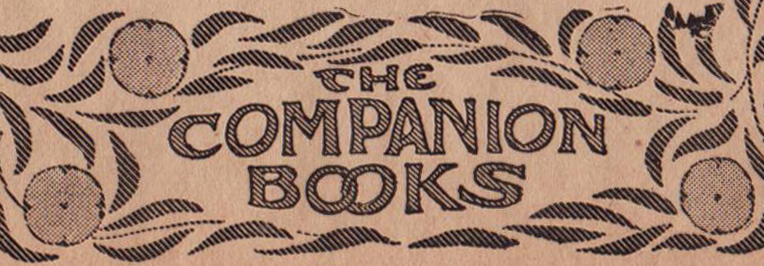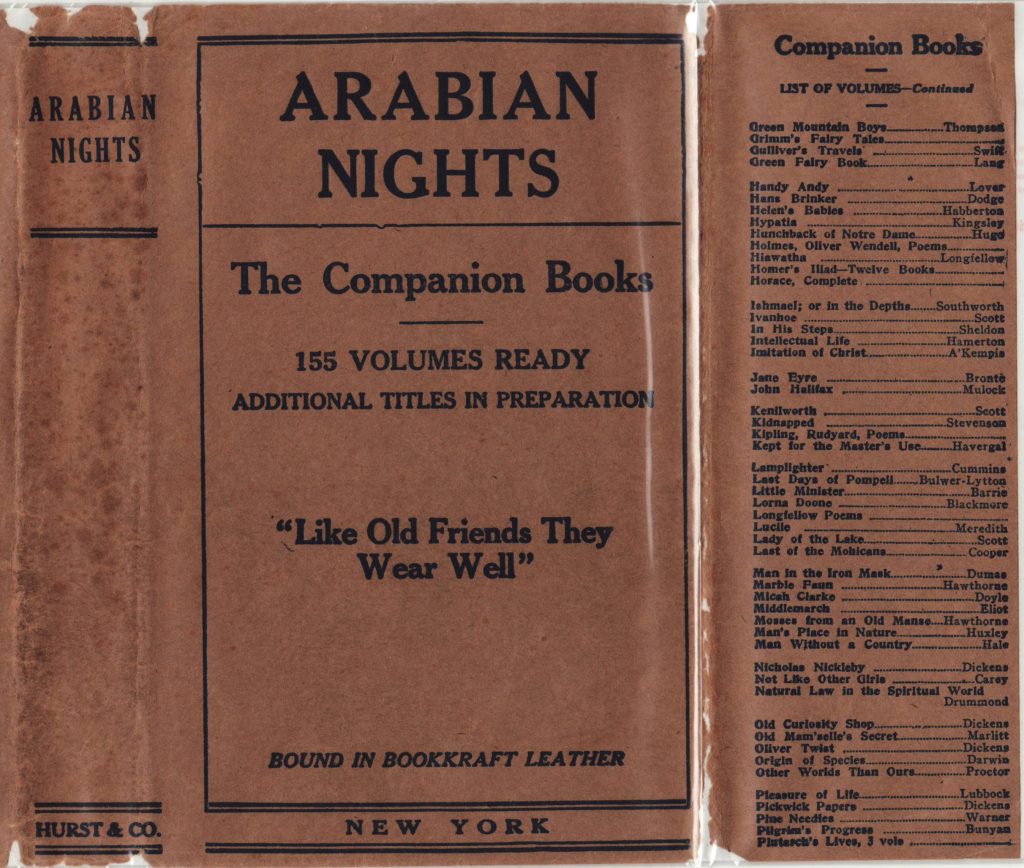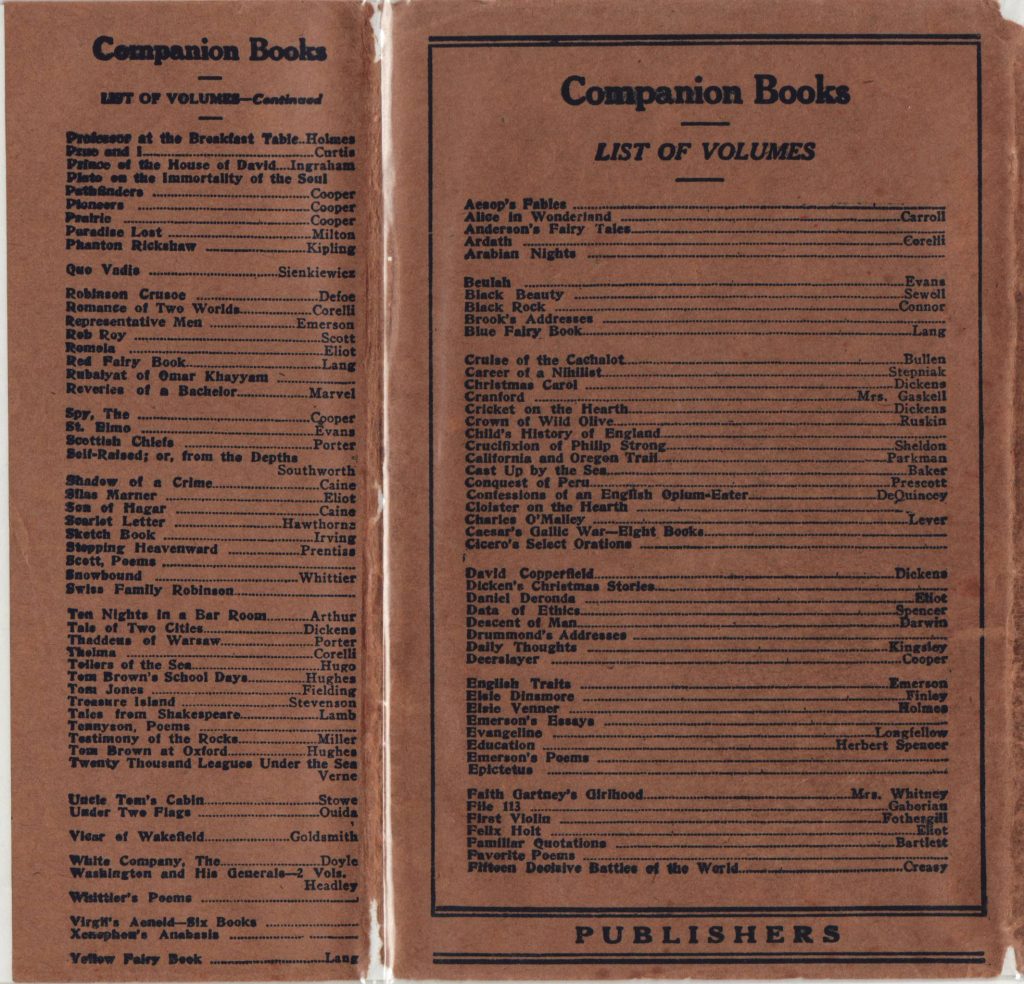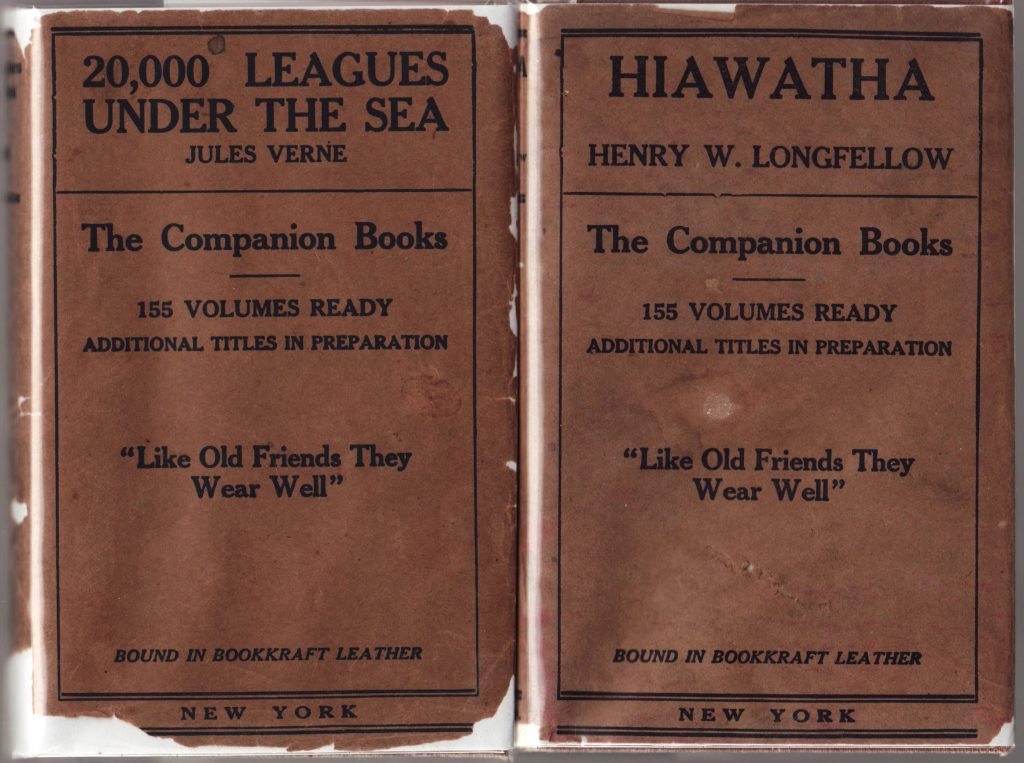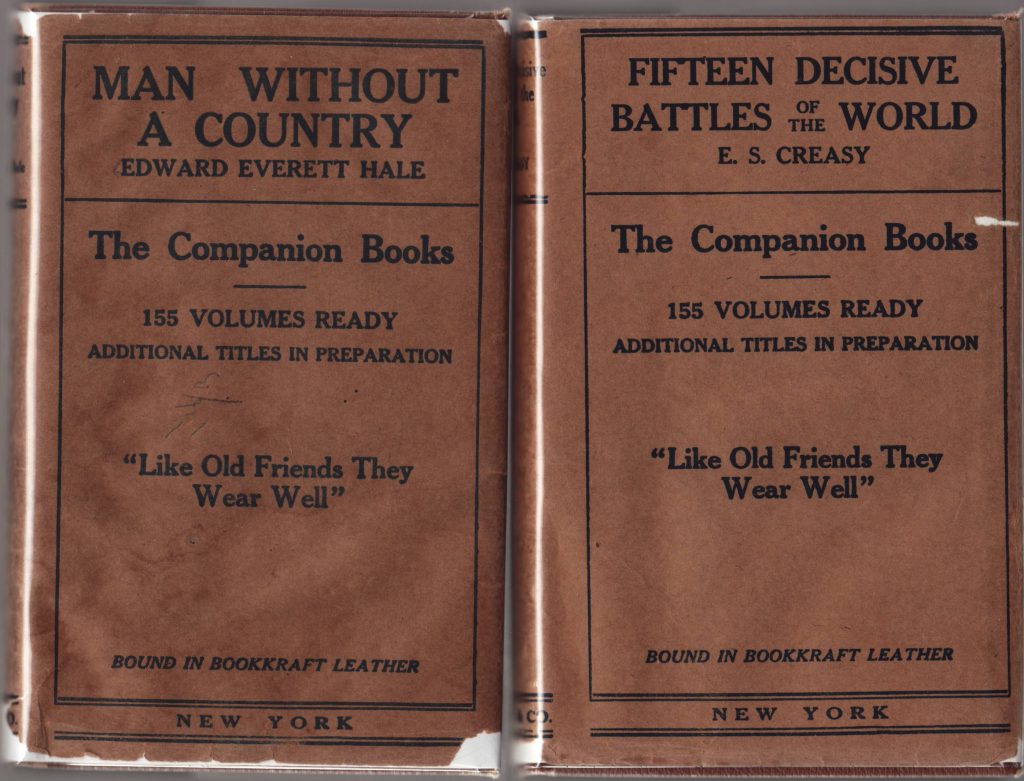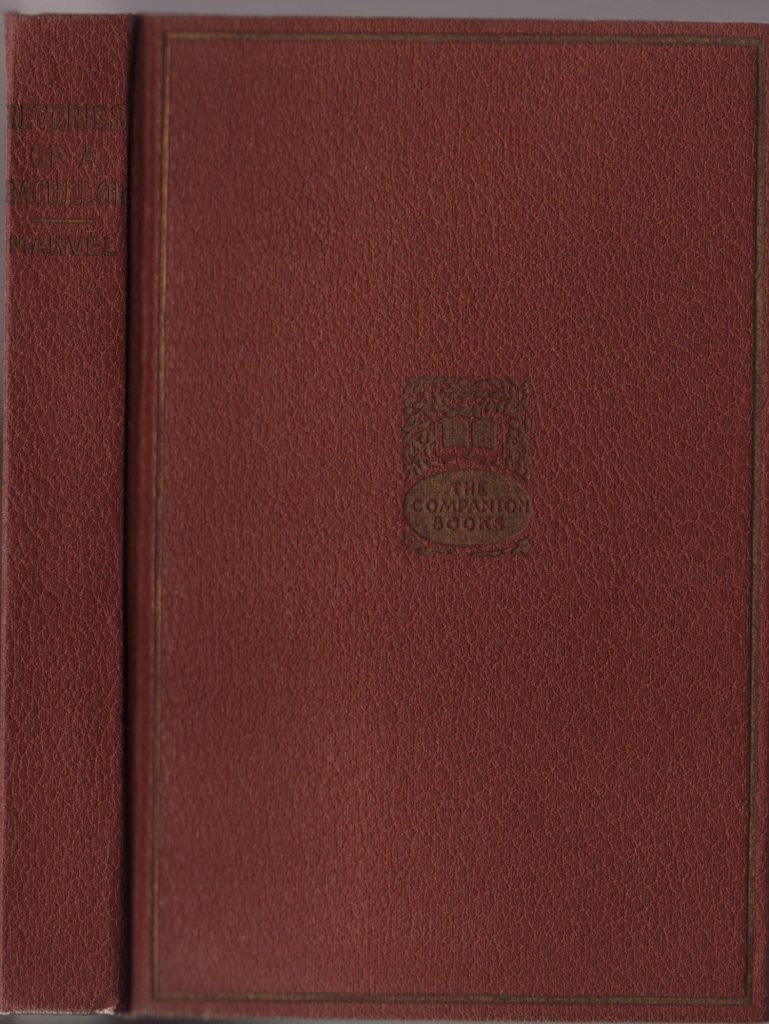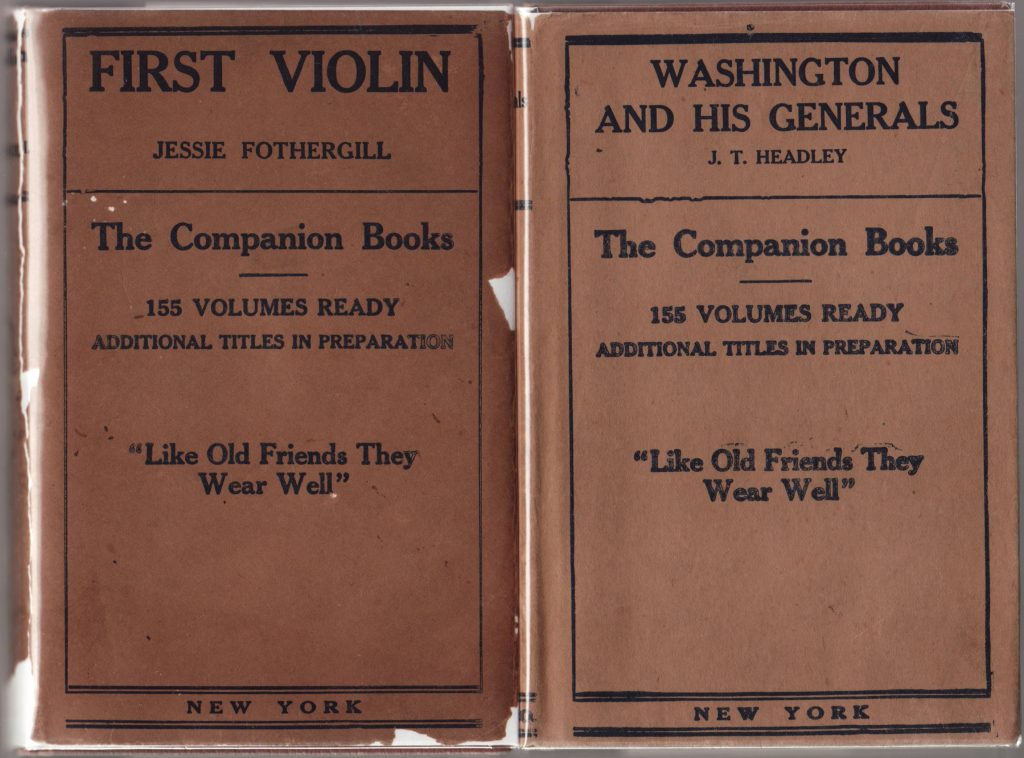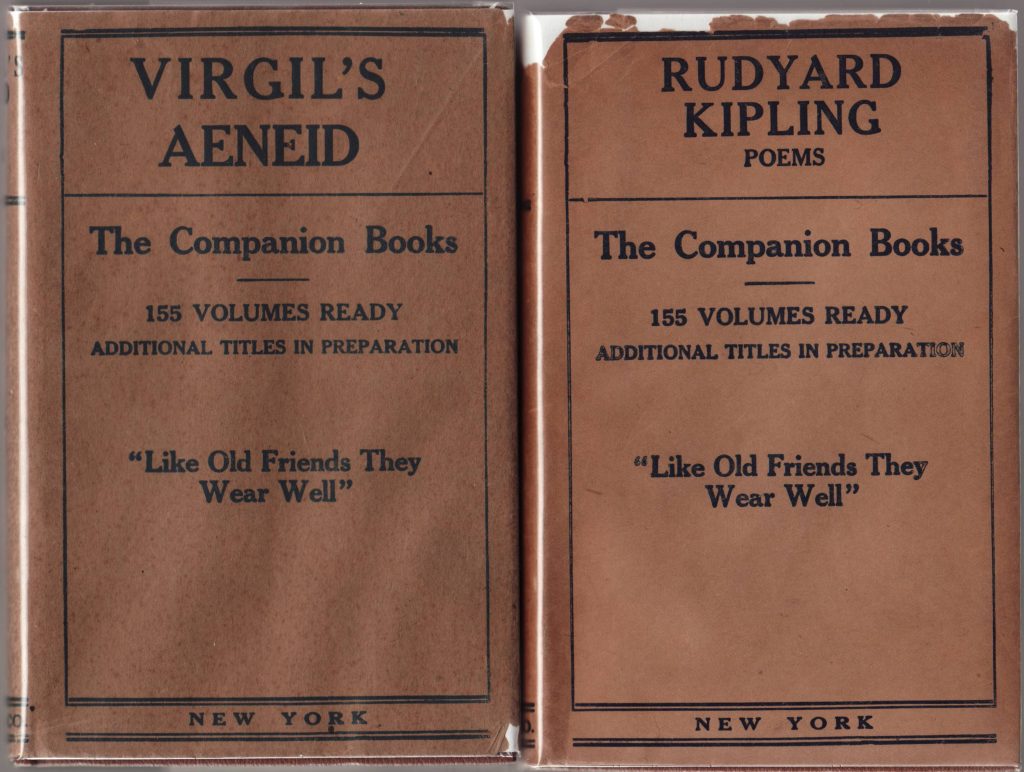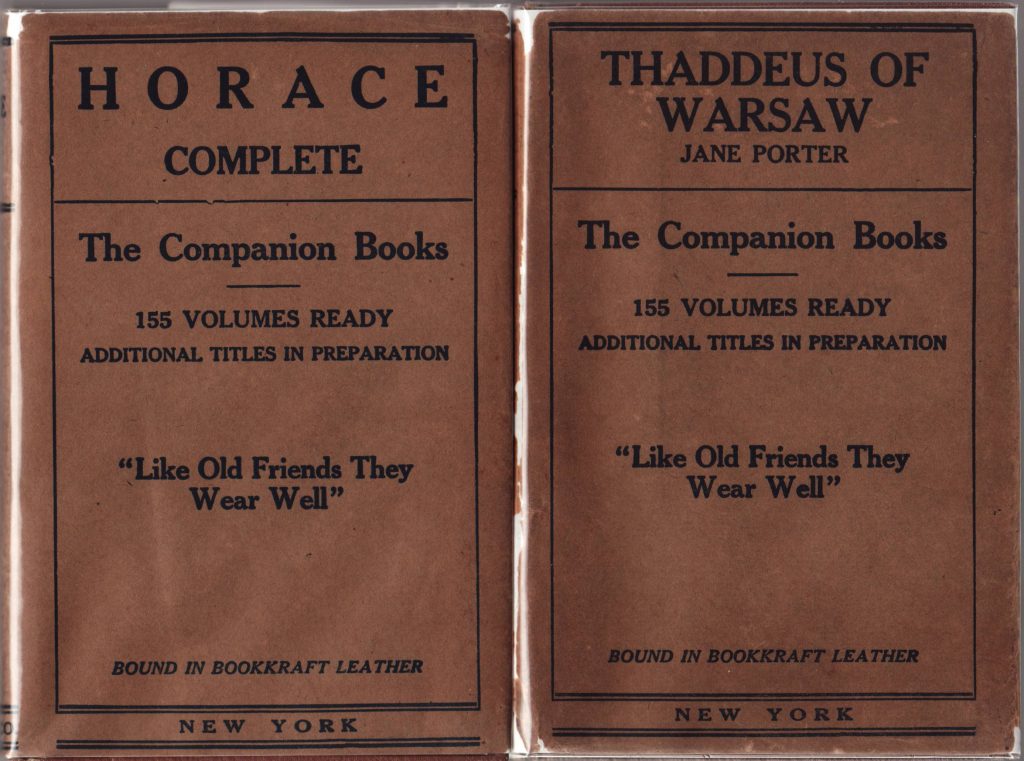Hurst & Company (New York, US)
Series dates: 1918-1919
Size: 5″ x 7.5″
Hurst published a tremendous number of reprint book series in the late 1800s through the company’s demise in 1920. More information about Hurst and a few of its other series can be found under entries for Hurst’s Poetical Classics and Best Value Books.
Hurst’s books were at best of mediocre quality with a focus on form rather than content. Thus many of the titles were copyright free titles with old printing plates or more contemporary titles that, for the most part, were mediocre throw-away fiction. The bindings and packaging varied from series to series, but the same titles often filled the series lists. The flood of cheap reprint novels in the teens left many publishers with large amounts of unsold stock of these series books, and most likely contributed to Hurst’s demise in 1919.
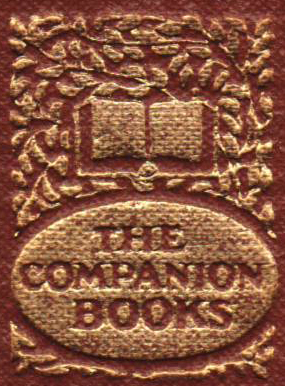 The Companion Books were most likely a last ditch effort for Hurst. The series emulated the popular Modern Library, at least in form, itself launched, to much acclaim, in 1917 by Boni & Liveright. Alas, while the Modern Library had a succinct list of cutting-edge titles of modernist literature, the Companion Books were, by and large, a jumble of (as with their other series) creaky old classics printed from worn plates and mediocre modern fiction that Hurst had the right to print. Hurst, in other words, seemed to hope that books that looked like the Modern Library (with their rather minimalist design) would sell, even if the content was not up to par. It seems that a significant number of the Companion Books were printed in 1918 and early 1919 before Hurst went out of business. The series, then, could not save the publisher.
The Companion Books were most likely a last ditch effort for Hurst. The series emulated the popular Modern Library, at least in form, itself launched, to much acclaim, in 1917 by Boni & Liveright. Alas, while the Modern Library had a succinct list of cutting-edge titles of modernist literature, the Companion Books were, by and large, a jumble of (as with their other series) creaky old classics printed from worn plates and mediocre modern fiction that Hurst had the right to print. Hurst, in other words, seemed to hope that books that looked like the Modern Library (with their rather minimalist design) would sell, even if the content was not up to par. It seems that a significant number of the Companion Books were printed in 1918 and early 1919 before Hurst went out of business. The series, then, could not save the publisher.
I put together information on the Companion Books (and also Secker’s New Adelphi Library series) in an article called “Modern Library and Everyman’s Library Simulacra?” Comparisons between the Modern Library and Companion books below is drawn from that article.
| Boni & Liveright Modern Library 1917-20 |
Hurst & Co. Companion Books 1918-19 |
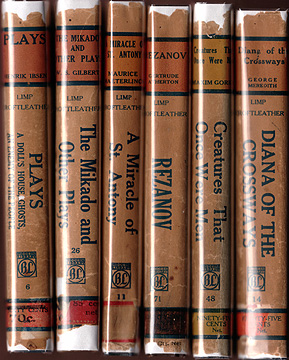 |
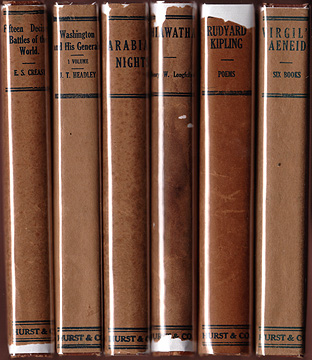 |
The Companion Book example below is from the first year of the Companion Books – 1918, the year after the first batch of Modern Library editions were published. The price of each Companion Book was 50 cents (undercutting the Modern Library by a dime or two).By 1919, the price of a Companion Book was raised to 1 dollar, and the design of the book changed: the floppy “bookcraft leather” binding changed to a stiffer, cheaper (but still fake leather) material, and the colored endpapers were replaced with plain paper (see below). The paper used for the book was coarser and cheaper. However, the dust jacket and binding markings remained the same.
According to the Publishers’ Trade List Annual, the Companion Books were not advertised (and thus probably not published) after 1919.
| 1917 (September) Modern Library copy of Ibsen’s Plays: A Doll’s House, Ghosts, an Enemy of the People | 1918 Companion Books (Hurst & Co.) copy of Creasy’s Fifteen Decisive Battles of the World |
 |
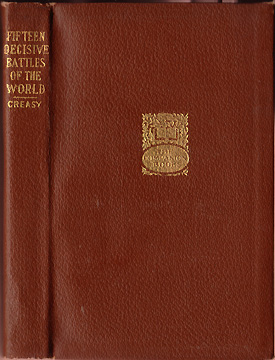 |
 |
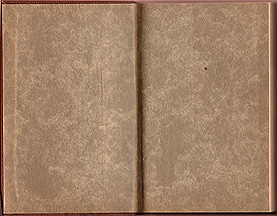 |
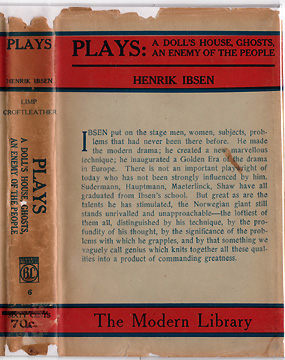 |
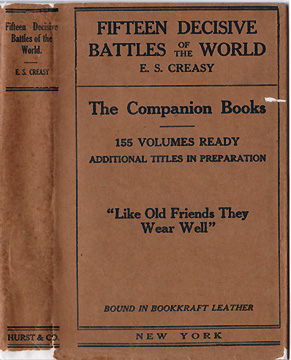 |
As they were printed for a short time, the Companion Books only have a few variations in design and binding.
“Like old friends, they wear well.”
Jackets are plain and indicate 155 titles (which was probably the final count of titles in the series). The initial jackets indicate “Bound in Bookkraft Leather” which is fake leather. They do have the flexibility that early Modern Library series books have. Volumes in the series are listed on the front jacket flap, continued from the jacket back.
The list of titles does not vary on any of the 12 copies I have in jackets.
Initial bindings are decent, flexible faux-leather with the series logo stamped on the cover. Endpapers (see above) are marbled paper, just like the Modern Library.
Decorative title pages identify the series. Copyright information appears on the reverse of the title page in 2 out of the 12 books examined. Longfellow’s Song of Hiawatha Copyright 1898 by S.C. Andrews and Hale’s Man Without a Country is Copyright 1907 by Hurst & Co.
Four books from the earlier printings, in the “Bookkraft Leather” binding.
Later jackets remove the reference to “Bookkraft Leather” and the books are bound in a cheaper plasticized cardboard material. The paper seems cheaper in these later copies.
The 155 original titles in the series have not changed on the jackets:
The faux-faux leather bindings on later copies; the “gold” stamping has darkened or fallen off suggesting the stamping quality was also lower on these later copies.
Six more copies of the later printings of the Companion Books:
The Companion Books are an interesting example of an attempt to emulate another, successful series – at least in form. That the series and Publisher were not successful provides an interesting insight into form vs. content of these reprint series.
